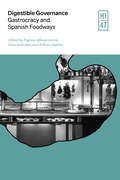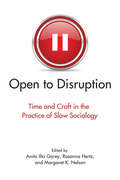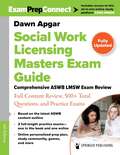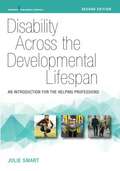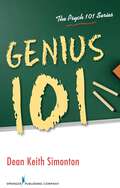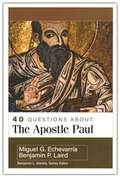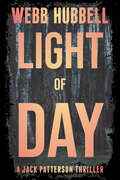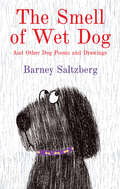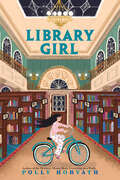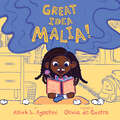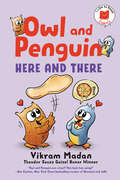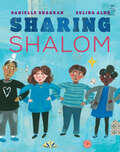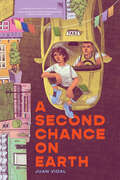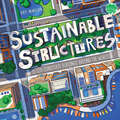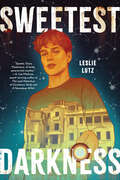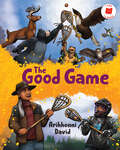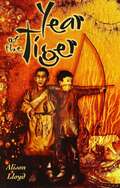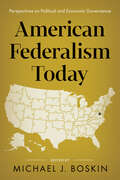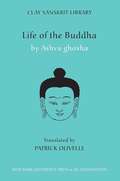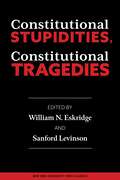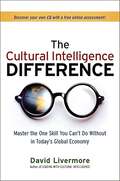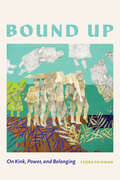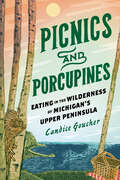- Table View
- List View
Digestible Governance: Gastrocracy and Spanish Foodways (Hispanic Issues)
by Bob Davidson Carolyn A. Nadeau Montserrat Miller Aitana Guia H. Rosi Song Silvina Schammah Gesser Jessica R. Boll Suzanne Dunai Luis Benito García Álvarez Alejandro J. Gómez del Moral Susy Gruss F. Xavier MedinaThe term &“gastrocracy&” refers to the appropriation of discourses and practices related to the sourcing, preparation, distribution, and consumption of food for political purposes. The intersections of gastronomy and governance, dating in Spain to the last quarter of the nineteenth century, have become highly visible over the past decade, when political debates around nationalism in its different forms have taken the guise of discussions about regional and local cuisines. Concomitant with the rise of the &“slow food&” movement and following UNESCO&’s addition in 2011 of &“Gastronomic Meal of the French&” to its list of Intangible Cultural Heritage of Humanity, public and private associations all around Spain have been established with the goal of achieving recognition by UNESCO for Spanish, Catalan, and other national cuisines. In 2016, Gastro Marca España—an association and a web portal—was launched to raise the profile of food in Spain&’s national brand. Eliciting wide public participation, co-opted for political purposes, regarded as a factor of economic development on any scale, and integrated into every so-called banal nationalism, the production, distribution, and consumption of food are highly relevant for historical analysis. Seeking to encourage a broader discussion about Peninsular gastrocracies, this book brings together an interdisciplinary group of scholars from different sides of the Atlantic and the Pacific who have spearheaded research on gastronomy and governance in Spain.
Open to Disruption: Time and Craft in the Practice of Slow Sociology
by Anita Ilta Garey, Rosanna Hertz, and Margaret K. NelsonAt a time when an emphasis on productivity in higher education threatens to undermine well-crafted research, these highly reflexive essays capture the sometimes profound intellectual effects that may accompany disrupted scholarship. They reveal that over long periods of time relationships with people studied invariably change, sometimes in dramatic ways. They illustrate how world events such as 9/11 and economic cycles impact individual biographies. Some researchers describe how disruptions prompted them to expand the boundaries of their discipline and invent concepts that could more accurately describe phenomena that previously had no name and no scholarly history. Sometimes scholars themselves caused the disruption as they circled back to work they had considered "done" and allowed the possibility of rethinking earlier findings.
Social Work Licensing Masters Exam Guide: Comprehensive Aswb Lmsw Exam Review With Full Content Review, 500+ Total Questions, And Practice Exams
by Dawn ApgarSocial Work Licensing Masters Exam Guide, Fourth Edition, provides everything you need to successfully pass the ASWB LMSW exam and become fully licensed to practice. This bestselling guide from Dawn Apgar is now updated with more practice questions and features to help you study for and pass the LMSW exam. Chapters fully cover the four exam content areas and all Knowledge, Skills, and Abilities (KSAs), and end-of-section questions test your understanding and retention. The review concludes with 2 full-length practice exams to prepare you for exam day. With more than 500 unique questions, detailed review content, answer rationales, a glossary of key social work terms, and access to ExamPrepConnect, this guide empowers you with the tools and materials to study your way and the confidence to pass the first time, guaranteed (details inside). Join thousands of successful licensed social workers who have passed their exam with this essential resource.
Disability Across the Developmental Lifespan
by Julie SmartThis is the only text to examine the experience of disability in relation to theories of human growth and development. It provides a foundational and comprehensive examination of disability that encompasses the intellectual, psychiatric, physical, and social arenas. The second edition is updated to underscore its versatility as an introductory text about the developmental tasks of people with disabilities for all the helping professions. Reorganized to illuminate the book’s interdisciplinary focus, it includes new demographics, new case studies and first-person accounts, discussions on cultural aspects of disabilities, family concerns, and more. The text delivers practice guidelines for each of the conventional life stages and describes the developmental tasks of individuals with disabilities (IWDs). It emphasizes the positive trend in the perception of IWDs as normal and underscores the fact that IWDs have the same motivations, emotions, and goals as those without disabilities. Learning activities, suggestions for writing exercises, and websites for further study reinforce learning, as do graphs and charts illustrating trends and demographics.
Genius 101 (Springer Ser.)
by Dean Keith SimontonGenius," contrary to common belief, is not strictly a matter of intelligence. Intellect, personality, creativity, even serendipity play a significant role in molding a genius. So, what does it mean to be a genius? Genius 101 examines the many definitions of "genius," and the multiple domains in which it appears, including art, science, music, business, literature, and the media. Dr. Simonton introduces the study of genius theory and the research supporting it, using non-scientific, accessible language-fit for a non-genius.
40 Questions About the Apostle Paul
by Miguel G. EcevarríaWhat can we know about the apostle Paul, and what difference does it make? Paul of Tarsus was an undeniably forceful presence in the early Christian church, instructing fledgling congregations of believers throughout the Mediterranean in person and by letter and authoring about half of the New Testament in the process. But who was this powerful personality? And how can students most benefit from the extensive studies on Paul available today? New Testament scholars Miguel Echevarria and Benjamin Laird provide an invaluable foundation for students beginning their investigations into the apostle Paul, Paul’s theology, and Pauline studies, addressing orienting questions such as these: • What do we know about Paul’s family? • How did Paul’s companions assist in the composition and distribution of his letters? • Did Paul think his letters were authoritative Scripture? • Is there a center to Paul’s theology? • What is Paul’s Christology? • What are the strengths and weaknesses of the New Perspective on Paul? • Does Paul address slavery and racial division? Through its question-and-answer format, 40 Questions about the Apostle Paul provides a succinct introduction and entryway to more advanced study of Paul and the Pauline letter corpus. Additional resources are available at 40questions.net.
Light of Day (A Jack Patterson Thriller)
by Webb HubbellThe Louisiana Crime Syndicate. Software that threatens national security. A vengeful hitman. Jack Patterson is faced with a case determined to see him lose—either in court or his life—in the sixth novel from former Associate Attorney General of the United States and award-winning author, Webb Hubbell. Every now and then, more frequently than he cares to admit, antitrust lawyer Jack Patterson gets involved in a case more complicated, more dangerous, than just defending big companies who've run afoul. He doesn't know it yet, but he's about to take on a new client: the grandson of the head of the Louisiana crime syndicate in New Orleans. Young David is a computer genius who has invented a software program considered to be a serious threat to both national security and most major technology companies. So when the FBI throws him in the DC jail without bond, and a conglomerate of tech companies sue him in Federal Court, Jack figures he can at least get the young man out on bail and be home for the weekend. He couldn't be more wrong. Before he can even meet with the client, his bodyguard is drugged and Jack is left for dead in the swamps of Cajun country. He must make his way back to DC, wage a battle in court, and dodge a hitman who lurks around every corner. Can Jack save his client and overcome those who will go to any length to prevent the software from seeing the light of day?
The Smell of Wet Dog: And Other Dog Poems and Drawings
by Barney SaltzbergEqual parts heart-melting and stinky, The Smell of Wet Dog is a must-have illustrated poetry book for every young canine fan.The smell of wet dog is not a good smell.When a dog is wet it&’s easy to tell.Imagine moose and skunk perfume.An odiferous stench, a paint-peeling plume.Beloved author and illustrator Barney Saltzberg offers up twenty-seven poems on the evergreen topic of human&’s best friend. Many have all the humor of a Shel Silverstein classic. Others are unexpectedly poignant, about separation anxiety or older dogs growing less spry. All are accompanied by Saltzberg&’s lively and loveable artwork. Whether you are a dog lover, love a dog lover, or are simply dog-curious, The Smell of Wet Dog is for someone in your life. One thing&’s for sure: You&’ll leave this book inspired to write an ode to a furry friend of your own!A Junior Library Guild Gold Standard Selection
Library Girl
by Polly HorvathAfter living in the public library for the last eleven years, Essie must learn to adapt to a world that&’s not as perfect as the stories she&’s grown up with in this heartfelt middle grade novel from Newbery Honor author Polly Horvath.Essie has grown up in the public library, raised in secret by the four librarians who found her abandoned as a baby in the children&’s department. With four mothers and miles of books to read, Essie has always been very happy living there. But now that she is eleven, Essie longs for a little more freedom . . . and maybe a friend her own age. She seems to get her wish when her moms let her go by herself to the mall. On her second trip there, she meets G.E., a mysterious boy who looks so much like her she can&’t help but think they may be twins. Maybe he was raised by four dads in the appliance section of the department store. Maybe his story is intertwined with hers, and their happy ending is as one big family. But as she gets to know G.E. better, she learns that nothing is as simple as it seems in her stories—not even her own past.With her signature warmth and offbeat humor, Newbery Honor author Polly Horvath invites book lovers to sit back in their own library nooks and check out a whimsical adventure perfect for readers trying to find their place in the world.
Great Idea Malia!
by Alliah L. AgostiniMalia has big ideas and boundless energy for problem-solving her mom&’s new job in this joyful picture book that&’s perfect for young families juggling work and play.Malia loves two things: spending time with Mom and dreaming up Great Ideas. That&’s why they call her Great Idea Malia! (Or at least . . . they should!)When Mom gets a big new job, she is busier than ever. Malia realizes that Mom needs help. Time for some Great Ideas!1. Malia cleans Mom&’s office—sweeping her paperwork into the recycling. 2. Malia answers all her emails—with random emojis. 3. Malia even jazzes up her presentation— with cute dinosaurs and unicorns.When it turns out this was not the help Mom had in mind, Malia needs a better-than-ever Great Idea to make things right.Explore the big power of &“small&” ideas in this relatable story with a lovable mother-daughter duo, fabulous art, and inspirational—if slightly misplaced—energy.
Owl and Penguin: Here and There (I Like to Read Comics)
by Vikram MadanTwo feathered friends are Frog and Toad for the emoji generation in this delightful graphic novel series for emerging readers by a Theodor Seuss Geisel Honor winner.Owl and Penguin want to make a pizza. But they can&’t agree on how to toss the dough. Owl can do it better . . . no, Penguin can do it best! Hmmm, maybe they should just get takeout.Sometimes friends disagree. Though Owl and Penguin are opposites, they like to solve their conflicts with creative play. From making snow creatures to hiking a mountain, there&’s nothing these pals can&’t get through together. In three nearly wordless stories, expressive art leads the storytelling, supplemented by simple text captions and emoticon-style images in speech bubbles. This innovative format supports visual literacy and sight word recognition for the earliest independent readers. With warm humor and a joyful palette, it&’s perfect for kids to giggle over on their own.I Like to Read® Comics are perfect for kids who are challenged by or unengaged in reading, kids who love art, and the growing number of young comics fans. Filled with eye-catching art, humor, and terrific stories, these comics provide unique reading experiences for growing minds. Like their award-winning I Like to Read® counterparts, these books are created by celebrated artists and support reading comprehension to transform children into lifelong readers.A Junior Library Guild Gold Standard Selection
Sharing Shalom
by Danielle SharkanA girl&’s community joins hands to fight intolerance in this richly illustrated picture book that sings with hope for young readers.Leila loves going to Hebrew school and hearing stories of mighty kings and quick-witted queens. Being Jewish is a part of her story, and learning Hebrew connects her to her ancestors. L&’dor V&’dor! From one generation to the next! But when Leila&’s synagogue gets vandalized, she isn&’t sure what she wants. Something that used to make her feel special now just makes her feel different.Then Leila&’s classmates and community come together to repair the synagogue. This compassionate gesture makes Leila realize that everyone around her is different—and that&’s a beautiful thing.Lyrical text and gorgeous, textured collage art by award-winning illustrator Selina Alko enhance this uplifting story about honoring a diverse community. Back matter provides a springboard for age-appropriate conversations about inclusion and bridge-building between cultures. Perfect for fans of All Are Welcome and The Proudest Blue.
A Second Chance on Earth
by Juan VidalA father, a friend, and a favorite book help a teen boy understand love and loss in this moving and vivid YA novel in verse.Have you ever encountered a book that KO&’d you, Iron Mike Tyson style? One that hit you square in the face and heart like some abracadabra casting a hex from an unknown planet? For sixteen-year-old poet and b-baller Marcos Cadena, that book is the beat-up copy of One Hundred Years of Solitude he finds among his late father&’s possessions after Papi is killed in an accident.Marcos&’ papi has always loomed large in his eyes. So, when Marcos travels to his parents&’ childhood home of Cartagena, Colombia to spread Papi&’s ashes, he brings his father&’s book with him, convinced that Gabriel García Márquez&’s masterpiece holds the key to understanding Papi&’s life and accepting his death.In Cartagena, Marcos befriends eighteen-year-old Camilo, a taxi driver and fellow García Márquez fan who appoints himself Marcos&’ unofficial tour guide. Together, the two boys explore the landscape of Cartagena, from the picturesque streets of Old Town to the poor neighborhood where Camilo grew up. But when Camilo reveals a troubling secret from his past, Marcos must ask himself whether everyone deserves a second chance.Woven through with themes of friendship, family, and forgiveness, this poignant novel in verse is also a love letter to Colombia and to the books of Gabriel García Márquez.
Sustainable Structures: 15 Eco-Conscious Buildings Around the World (Books for a Better Earth)
by Kate McMillanA stunning illustrated overview of &“green&” architecture on every continent, packed full of cool STEAM facts and fascinating details.From a waste collection site built entirely from recycled materials, to a school designed to float during flood season in Bangladesh, this dazzling book highlights innovative and sustainably built structures around the world. Did you know that &“woodscrapers,&” or skyscrapers made of wood, can reduce construction waste? How about that termite mounds have served as inspiration for temperature control systems? And believe it or not… there&’s a research station built on skis in Antarctica.Pairing a kid friendly, conversational approach with spectacularly detailed art, Kate McMillan dissects the design of 15 eco-friendly buildings worldwide. The extraordinary structures fall into five categories, each emphasizing a key element of sustainable design: 1) local materials, 2) adaptability, 3) sustainable construction, 4) clean energy, and 5) optimized space. Readers of all ages will love poring over the precise, colorful illustrations and informative close ups featured on eye catching double-page spreads. Perfect for budding architects and engineers, this book is a work of art!Books for a Better Earth™ are designed to inspire children to become active, knowledgeable participants in caring for the planet they live on.A Junior Library Guild Gold Standard Selection
Sweetest Darkness
by Leslie LutzA teenage psychic is drawn deep into the honeycomb of an abandoned hotel—and into a cat-and-mouse game with a predatory entity—in this riveting new supernatural horror novel."SO SCARY, IT GIVES DARKNESS A BAD NAME! When I finished the last page, I realized I was still shivering."—R.L. STINE, author of Goosebumps and Fear StreetEveryone in Gypsum, Texas knows the Hotel Alvarado changes at night—especially Quinn. A teenage clairvoyant, he&’s been having dreams about it… dreams that call him to its dark, abandoned halls. The hotel is a monument to the town&’s more prosperous past, when celebrities flocked to the mineral spas and films were shot in the desert. The Great Depression killed all of that, it killed the Alvarado, and frankly it killed Gypsum, too. Now, when the sun goes down, things no longer living stir deep within its creaking depths.But the dreams are relentless. When Quinn braves the hotel&’s darkness with his best friend June and unrequited love Selena, looking for answers, he gets only one: ghosts aren&’t the scariest thing lurking inside the Alvarado (although they&’re there, cold and restless and angry). No. He&’s been called by something worse: a predatory, inhuman entity that threatens to wipe Gypsum off the map, along with everyone in it. And wrongly—accidentally—he&’s let it out. It takes the shape of a handsome young man. It walks. It talks. It laughs. It can even make you laugh. But its appetite for death can never be sated. Quinn has always had the power to see the future… can he find the power to change it?"Mesmeric. Hauntingly beautiful. A must-read for anyone who dares to venture into the abyss."—Robin Alvarez, author of When Oceans Rise"Spooky. Scary. Mysterious. Twisty."—A. Lee Martinez, award-winning author of A Namless Witch
The Good Game (I Like to Read)
by Arihhonni DavidHow can the small mouse and squirrel play lacrosse with the big animals? A fun Native American tale that first graders can read on their own.A game of lacrosse is about to begin—with the four-legged animals facing off against the winged animals. Mouse and Squirrel want to join! But Bear and Deer won&’t let animals so small on their team. The birds would welcome the small animals, but Mouse and Squirrel can't fly. The winged team has a clever plan.This Native American tale about the origin of the bat and flying squirrel is framed by a grandfather sharing a story with his grandson.Phonics features are noted on the copyright page.This book has been officially leveled by using the F & P Text Level Gradient(TM) Leveling System. It is a Level I for Grade 1.The award-winning I Like to Read® series focuses on books for kindergarteners and first graders. Acclaimed author-illustrators--including winners of Caldecott, Theodor Seuss Geisel, and Coretta Scott King honors—create original,high quality illustrations that support comprehension of simple text and are fun for kids to read again and again with their parents, teachers or on their own!A Junior Library Guild Gold Standard Selection!
Graphs!
by David A. AdlerMath booster author David A. Adler and artist Ed Miller make pie charts easy-as-pie charts with this fun and vibrantly illustrated guide to data collection.For students, STEM topics don&’t always feel like a walk in the park. But what if they were more like a day at the fair? Follow Janet and Ben from the Ferris Wheel to the carousel as they use graphs and data collection to make decisions about their day. This is the sixteenth book in this duo&’s math picture book series. Combining elements of a graphic story with engaging and accessible nonfiction text, David A. Adler combines his well-established STEM know-how with Edward Miller&’s vibrant, high contrast art to take young readers on a wild ride through the world of bar graphs, pictographs, pie charts, and more!
Year Of The Tiger
by Alison LloydIn ancient China, the Great Wall is cumbling on the edge of the Han Empire. In the wall's shadow, twelve-year-old Hu is starving. On the other side of the wall, China's enemies are gathering strength. Here is an exciting adventure story for 2010, the year of the tiger.
Room Swept Home (Wesleyan Poetry Series)
by Remica Bingham-RisherRoom Swept Home serves as a gloriously rendered magnifying glass into all that is held in the line between the private and public, the investigative and generative, the self and those who came before us. In a strange twist of kismet, two of Bingham-Risher's ancestors intersect in Petersburg, Virginia, forty years before she herself is born: her paternal great-great-great grandmother, Minnie Lee Fowlkes, is interviewed for the Works Progress Administration Slave Narratives in Petersburg in 1937, and her maternal grandmother, Mary Knight, is sent to Petersburg in 1941, diagnosed with "water on the brain"—postpartum depression being an ongoing mystery—nine days after birthing her first child. Marrying meticulous archival research with Womanist scholarship and her hallmark lyrical precision, Bingham-Risher's latest collection treads the murky waters of race, lineage, faith, mental health, women's rights, and the violent reckoning that inhabits the discrepancy between lived versus textbook history, asking: What do we inherit when trauma is at the core of our fractured living?
American Federalism Today: Perspectives on Political and Economic Governance
by Michael J. BoskinWhat are federalism's challenges and opportunities today? The framers of the US Constitution enumerated specific powers for the federal government, leaving all else under the purview of states or the people. Over time, the federal government has expanded its role, yet the American people have more trust in state and local governments that are closer to them—and where co-partisanship is often a matter of necessity. Scholars and practitioners in policymaking gathered at the Hoover Institution in September 2023 to discuss the ramifications of federalism for contemporary issues. American Federalism Today presents those conference proceedings. Renowned experts from a range of disciplines, including economics, political science, history, and law, lay out the key priorities in evaluating and reinvigorating America's federal system of governance. Among the topics they examine are infrastructure, education and healthcare financing, trust in government, and intergovernmental relations in an era of rising federal debt and unfunded state and local liabilities. Three influential governors—Mitch Daniels, Jeb Bush, and Jerry Brown—describe navigating the federalist system as they led their states through many challenges. This unique compilation draws on the remarkable expertise and experience of its contributors to probe federalism's strengths, weaknesses, opportunities, and challenges in the nation's political and economic governance.
Life Of The Buddha (Clay Sanskrit Library #10)
by Patrick Olivelle AshvaghosaThe Buddhist monk Ashva·ghosha composed Life of the Buddha in the first or second century CE probably in Ayódhya. This is the earliest surviving text of the Sanskrit literary genre called kavya and probably provided models for Kali·dasa's more famous works. The most poignant scenes on the path to his Awakening are when the young prince Siddhártha, the future Buddha, is confronted by the reality of sickness, old age, and death, while seduced by the charms of the women employed to keep him at home. A poet of the highest order, Ashva·ghosha's aim is not entertainment but instruction, presenting the Buddha's teaching as the culmination of the Brahmanical tradition. His wonderful descriptions of the bodies of courtesans are ultimately meant to show the transience of beauty.
Constitutional Stupidities, Constitutional Tragedies
by Sanford Levinson William N. Eskridge JR.The Constitution is the cornerstone of American government, hailed as one of the greatest contributions of the Western Enlightenment. While many seem content simply to celebrate it, those most familiar with the document invariably find it wanting in at least some aspects. This unique volume brings together many of the country's most esteemed constitutional commentators and invites them to answer two questions: First, what is the stupidest provision of the Constitution? "Stupid" need not mean evil. Thus, a second, related question is whether the scholar-interpreter would be forced to reach truly evil results even if applying his or her own favored theory of constitutional interpretation. The contributors include Lawrence Alexander, Akhil Reed Amar, Jack Balkin, Philip Bobbitt, Gerard Bradley, Rebecca Brown, Steven Calabresi, Lief Carter, Christopher Eisgruber, Lawrence Sager, Marie Failinger, Daniel Farber, James Fleming, Mark Graber, Stephen Griffin, Gary Jacobsohn, Randall Kennedy, Lewis LaRue, Theodore Lowi, Earl Maltz, Michael McConnell, Matthew Michael, Robert Nagel, Daniel Ortiz, Pamela Karlen, Michael Paulsen, Robert Post, Lucas Powe, Dorothy Roberts, Jeffrey Rosen, Frederick Schauer, Michael Seidman, Suzanna Sherry, David Strauss, Laurence Tribe, Mark Tushnet, and John Yoo.
Cultural Intelligence: Master the One Skill You Can't Do Without in Today's Global Economy
by David A. LivermoreAs an award-winning author and global business leader, David Livermore applies his social science and cultural intelligence (CQ) expertise to teach others how to thrive in increasingly multicultural workplaces and a globalized world. Now, in this essential book, he shows you how to leverage the benefits of cultural intelligence for themselves--including improved decision-making, negotiation, networking, and leadership skills--to gain a crucial advantage in the crowded job market. <P><P> In The Cultural Intelligence Difference, you’ll explore: customized strategies for improving interactions with people from diverse cultures, new findings on the bottom-line benefits of cultural intelligence, and many examples of major organizations that use CQ to achieve success. Most people know that some basic cultural sensitivity is important. But few have developed the deep cultural intelligence needed to truly bridge the cultural gaps that exist in every workplace. <P><P> The Cultural Intelligence Difference delivers a powerful tool for navigating today's work world with finesse--and success.
Bound Up: On Kink, Power, and Belonging
by Leora FridmanA provocative look at historical trauma as bound, incarnated, and processed through intimate and sexual expression. In an autotheoretical journey through bondage, domination, and intimacy, Leora Fridman uncovers how Jewish historical trauma can be challenged and explored in embodied relations. Drawing on her experiences as an American Jew in Germany, Fridman delves into BDSM practices and experimental communities from Oakland to Berlin. This work weaves personal encounters with critical analysis founded in feminist theory, queer literature, Holocaust history, and memory studies. Bound Up begins with kink and leads us through a sensual and intelligent approach to intergenerational trauma and lived politics. What kind of healing can take place in the relational and physical realm? How can intimacy contradict and complement the process of political reparations? Fridman layers a nuanced understanding of shame, responsibility, and power with explorations of cinema, contemporary art, and popular culture to shed light on topics from personal and political relationships to victimhood and blame. Both timely and timeless, this work is an address to history and the contemporary moment, relevant to Jews, diasporic scholars, and all exploring ethical relationships with history and with other humans.
Picnics and Porcupines: Eating in the Wilderness of Michigan's Upper Peninsula (Great Lakes Books)
by Candice GoucherJourney to the edges of the Great Lakes in this engaging history of picnicking, wilderness, and foodways. This stunning venture into the American picnic explores how innovation, exploitation, and the changing wilderness of Michigan's Upper Peninsula have shaped the experience of eating outdoors. From a photo of her grandmother picnicking in 1911, to the outdoor lunches of miners and loggers, to the picnics of vacationing celebrities like Henry Ford and Ernest Hemingway, author Candice Goucher opens an aperture into historic memories of picnics past to consider what the picnic sparks in our senses and to bring the borderlands of humans and nature into view. Through pictures, postcards, paintings, and recipes, Goucher traces the creation of a modern notion of wilderness as it emerged in the North American imagination and popular culture to navigate an entangled environmental and culinary history of the Upper Peninsula. Drawing on themes from Indigenous knowledge and the African American experience to labor activism and women's history, this tantalizing chronicle offers a taste of Americana, seasoned by the changing global forces of industrialization, transportation, immigration, tourism, war, and climate.
